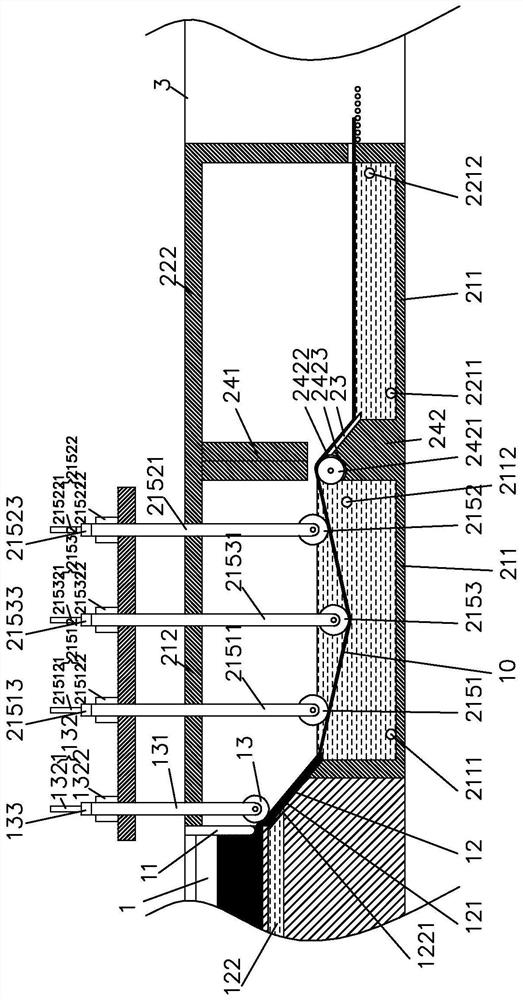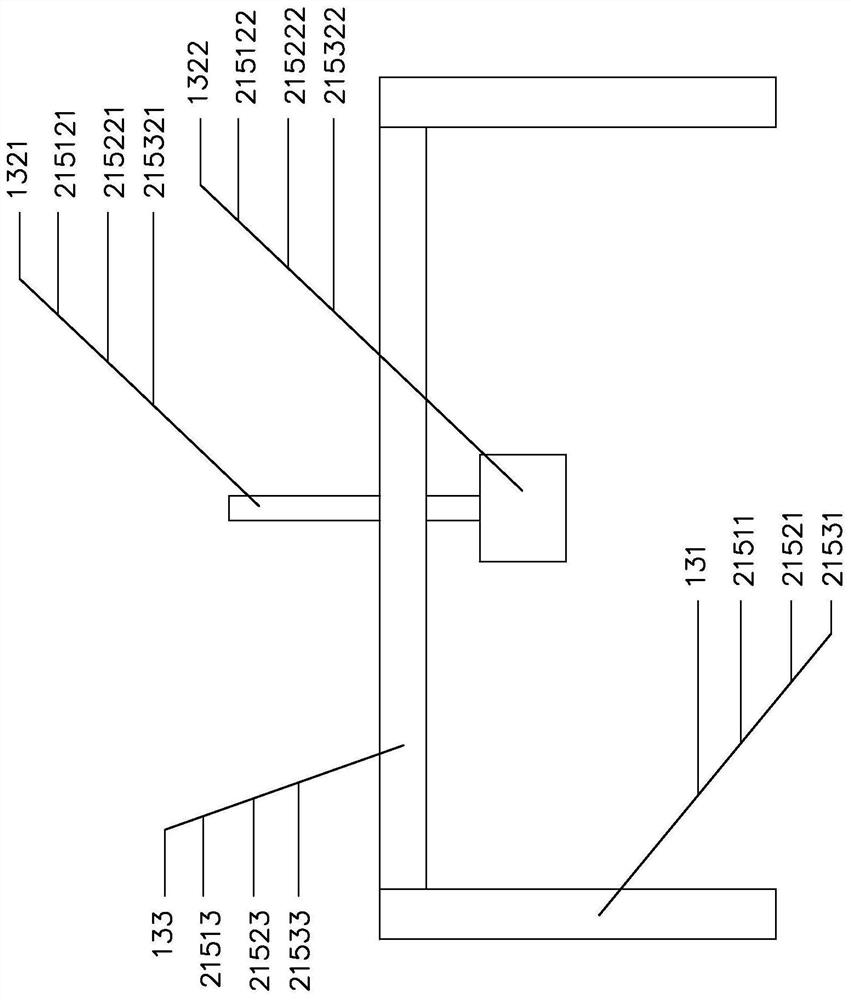A production process of ag glass
A production process and glass technology, applied in the field of AG glass production process, can solve problems such as glass damage and affecting glass quality
- Summary
- Abstract
- Description
- Claims
- Application Information
AI Technical Summary
Problems solved by technology
Method used
Image
Examples
Embodiment Construction
[0056] In order to further explain the technical solutions of the present invention, specific examples are given below to illustrate in detail.
[0057] A kind of production technology of AG glass of the present invention, as Figure 1-6 shown, including the following steps:
[0058] (1) Melting the glass raw material by using the melting furnace 1 to form a glass fluid;
[0059] (2) Carry out float method formation to the glass fluid by melting the tin room to form the early glass plate;
[0060] Preferably, the melting tin room includes a high-temperature floating room at the upstream and a low-temperature floating room at the downstream; The high-temperature house cover 212, the high-temperature supply tin tank 213 for supplying molten tin liquid to the high-temperature melting tin floating tank 211, and the high-temperature recovery tin tank 214 for containing the molten tin liquid flowing out from the high-temperature melting tin floating tank 211; The low-temperature ...
PUM
| Property | Measurement | Unit |
|---|---|---|
| thickness | aaaaa | aaaaa |
| thickness | aaaaa | aaaaa |
Abstract
Description
Claims
Application Information
 Login to View More
Login to View More - R&D
- Intellectual Property
- Life Sciences
- Materials
- Tech Scout
- Unparalleled Data Quality
- Higher Quality Content
- 60% Fewer Hallucinations
Browse by: Latest US Patents, China's latest patents, Technical Efficacy Thesaurus, Application Domain, Technology Topic, Popular Technical Reports.
© 2025 PatSnap. All rights reserved.Legal|Privacy policy|Modern Slavery Act Transparency Statement|Sitemap|About US| Contact US: help@patsnap.com



